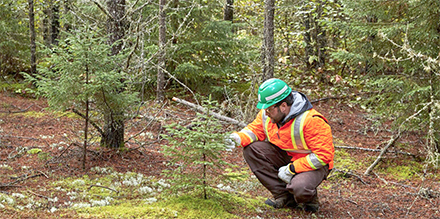Natural Resources Canada has published a report on the social, economic and environmental state of Canada’s forests and forest sector. The 2022 report spotlights the diversity of Canada’s forests, the sustainable management supporting their resilience and the range of benefits they provide. Source: Timberbiz
Canadians are committed to sustainably managing their forests for the multiple important values they provide. Canada’s rich forest ecosystems offer significant environmental, social and cultural benefits, as well as opportunities for responsible economic development. Sustainable forest management ensures that these benefits are maintained for both present and future generations.
Canada has been managing its forests according to the principles of sustainable forest management for many years. The State of Canada’s Forests: Annual Report has been a trusted and authoritative source of comprehensive information on the social, economic and environmental state of Canada’s forests and forest sector for 32 years.
Information published within the report is comparable to that reported by other countries participating in the Montréal Process. Canada also uses some of this information to report on United Nations Sustainable Development Goals and the United Nation Global Forest Goals. The State of Canada’s Forest: Annual Report will continue to be an accurate, comprehensive and authoritative source for information on Canada’s forests and forest sector.
Science-based measures called sustainability indicators are helpful tools for understanding the overall condition or state of Canada’s forests. Indicators provide a way to consistently define, assess, monitor, and report progress toward sustainable forest management.
The report titled: Diverse Forests for a Diverse Canada includes information about:
- How much forest does Canada have?
- Is timber being harvested sustainably?
- How does disturbance shape Canada’s forests?
- How do forests benefit Canadians?
- How does the forest sector contribute to Canada’s economy?
- How is the forest sector changing?
Canada has 9% of the world’s forests, about 90% of which is publicly owned. When harvested from public land, forests must be regenerated, promoting long-term sustainability.
Canada is aiming to designate 25% of its land as protected space by 2025 and 30% by 2030. It’s an ambitious goal, highlighting the value of biodiversity for long-term forest health.
In 2021, Canada’s forest sector directly employed 205,365 people, a 10% increase from 2020; and contributed $34.8 billion to the nation’s nominal GDP.
In 2020, according to the report, Canada’s managed forests and the wood products harvested from them removed about 5.3 Mt CO2e from the atmosphere, while its 138 native tree species provide over 40 known medical or pharmaceutical uses. Trees are also used to produce common materials such as rayon, cellophane, glue and turpentine.
The full report is available here.






